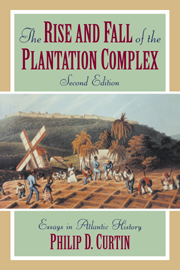14 - The end of slavery in the Americas
Published online by Cambridge University Press: 05 June 2012
Summary
The end of slavery in Cuba and Brazil was out of phase with emancipation elsewhere. It came nearly a century later than the slave revolt in Saint Domingue, a half-century after the emancipation of the slaves in the British Empire, four decades after the final abolition of slavery in the French colonies, and a little more than twenty years after the end of slavery in the United States and of serfdom in Russia. One question is: Why did slavery last so much longer here than it did in many larger societies that were more important on the world scene?
In fact, the timing was not so different. The dates of the formal legal emancipation create a misconception. Emancipation in Saint Domingue was an atypcial event, set off by the French Revolution. The French themselves rescinded their Emancipation Act of 1794 once Napoleon was safely in power. British, American, and French emancipations, formally declared between the 1830s and the 1860s, still preserved racial domination, and institutions like Indian contract labor helped to preserve the reality of the plantation complex into the twentieth century. During these same decades, both Cuba and Brazil had begun to dismantle their own slave systems. The Emancipation Act of 1833 for the British Empire, in effect, marked the beginning of a process of liquidating slavery, and the emancipation acts in Brazil and Cuba in the late 1880s came near the end of the same process in those countries.
- Type
- Chapter
- Information
- The Rise and Fall of the Plantation ComplexEssays in Atlantic History, pp. 189 - 203Publisher: Cambridge University PressPrint publication year: 1998

